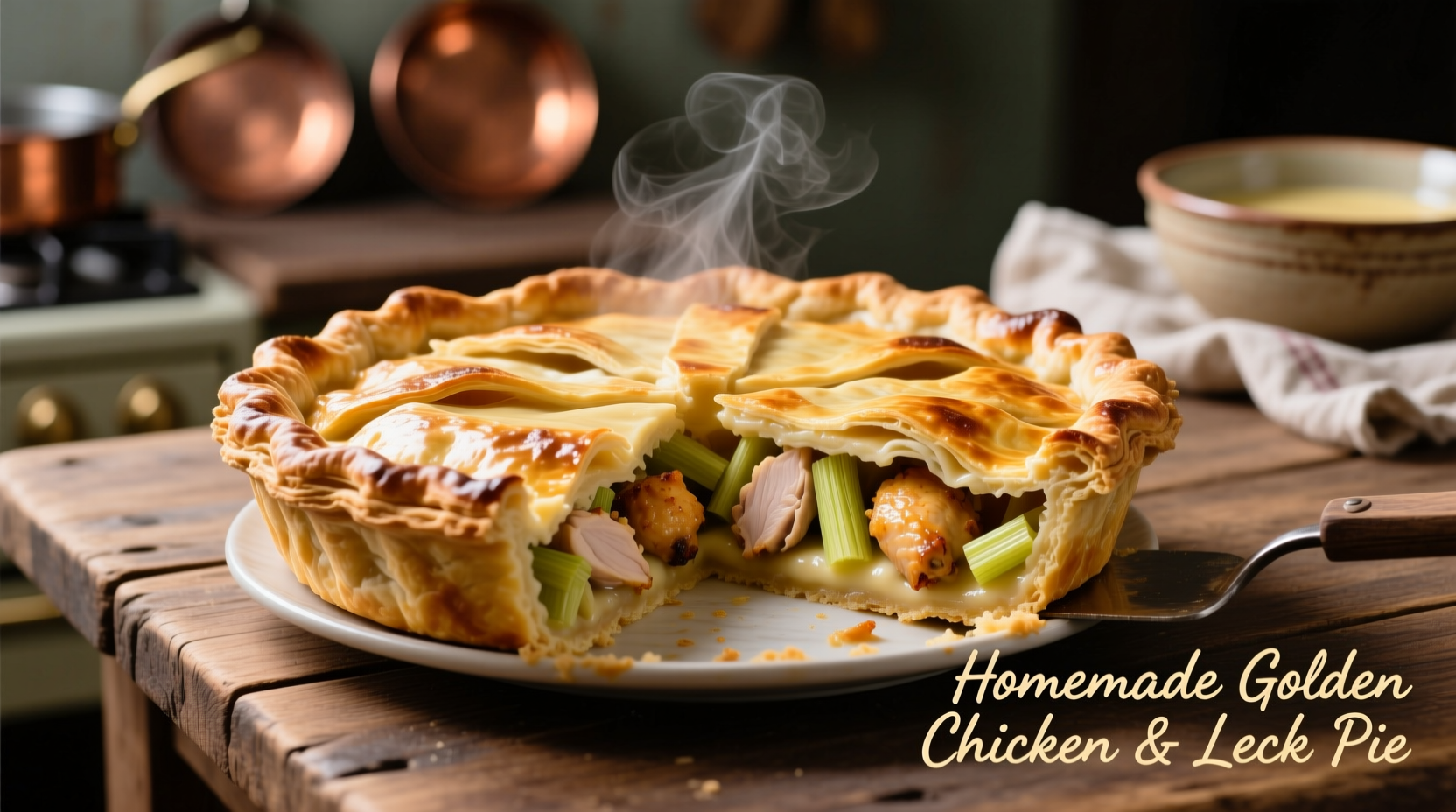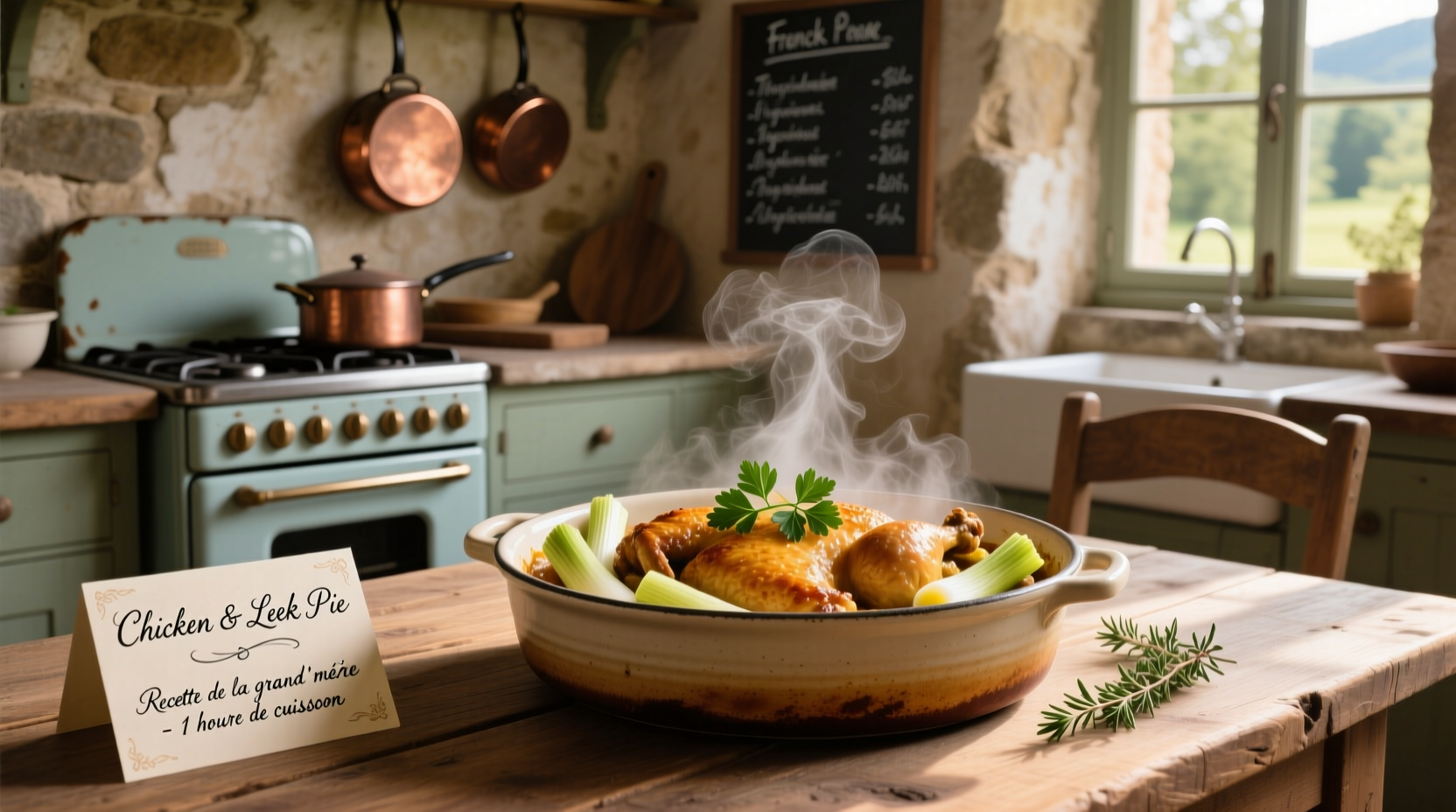Discover five foolproof chicken and leek recipes that transform this timeless pairing into impressive meals with minimal effort. Whether you're preparing a weeknight dinner or special occasion feast, these techniques ensure perfectly balanced flavors and textures every time—no culinary degree required.

Why Chicken and Leeks Create Culinary Magic
Professional chefs consistently pair chicken with leeks because their flavor profiles complement each other beautifully. Leeks contain natural sugars that caramelize during cooking, creating a subtle sweetness that enhances chicken's savory notes without overpowering them. Unlike onions, leeks offer a more delicate flavor that works equally well in creamy sauces, broths, and dry-heat preparations.
According to the USDA Agricultural Research Service, leeks contain beneficial organosulfur compounds that become more bioavailable when cooked slowly—a perfect match for chicken dishes requiring gentle simmering. This combination also delivers balanced nutrition: chicken provides complete protein while leeks contribute vitamins A, C, and K.
Essential Techniques for Perfect Results
Master these professional techniques to avoid common pitfalls when cooking with chicken and leeks:
| Cooking Method | Chicken Temp | Leek Prep | Best Recipe Type |
|---|---|---|---|
| Sautéing | 165°F (74°C) | Sliced thin | Stir-fries, skillet meals |
| Baking | 165°F (74°C) | Sliced medium | Pies, casseroles |
| Simmering | 165°F (74°C) | Sliced thick | Soups, stews |
| Roasting | 165°F (74°C) | Halved lengthwise | Whole chicken dishes |
Proper Leek Preparation
Leeks often contain hidden sand between their layers. To clean properly:
- Trim dark green tops and root ends
- Cut vertically through the center
- Submerge in cold water and swish to release dirt
- Rinse individual layers under running water
- Dry thoroughly before cooking
Five Versatile Chicken and Leek Recipes
Classic Chicken and Leek Pie
This British favorite features tender chicken and sweet leeks in creamy sauce, topped with flaky pastry. For best results, partially cook the leeks before adding to filling to prevent excess moisture. Use store-bought puff pastry to simplify preparation while maintaining impressive presentation.
30-Minute Chicken and Leek Stir-Fry
Perfect for busy weeknights, this Asian-inspired dish combines sliced chicken breast with leeks, bell peppers, and a light ginger-garlic sauce. The key is high-heat cooking—cook leeks just until translucent to maintain their delicate crunch. Serve over brown rice for a complete meal ready in under 30 minutes.
Creamy Chicken and Leek Soup
This French-inspired comfort food requires just six ingredients: chicken broth, leeks, potatoes, chicken, cream, and herbs. The secret to exceptional flavor? Cook leeks slowly over medium-low heat for 15 minutes before adding liquid to develop their natural sweetness. This technique, documented in Julia Child's Mastering the Art of French Cooking, creates a richer flavor base than simply boiling ingredients together.
Mediterranean Chicken and Leek Skillet
For a healthier option, try this olive oil-based dish featuring chicken thighs, leeks, cherry tomatoes, and white beans. The leeks' sweetness balances the acidity of tomatoes while chicken thighs stay moist during the baking process. This one-pan meal delivers complete protein and fiber while meeting Mediterranean diet principles.
French Chicken and Leek En Croute
Elevate your dinner with this elegant presentation where chicken breasts wrapped in puff pastry conceal a flavorful leek and mushroom duxelles filling. The pastry creates a protective layer that keeps chicken moist while allowing leeks to steam gently inside. This technique, originating in 19th century French cuisine, transforms simple ingredients into a restaurant-quality dish.
When to Choose Which Recipe
Understanding context boundaries helps select the perfect chicken and leek preparation for your situation:
- Weeknight dinners: Stir-fry or skillet recipes (under 30 minutes)
- Cold weather comfort: Soup or pie (hearty, warming)
- Special occasions: En croute or pie (impressive presentation)
- Dietary restrictions: Skillet version (easily adapted for gluten-free)
- Leftover transformation: Soup (uses cooked chicken effectively)
Troubleshooting Common Problems
Fix these frequent chicken and leek issues with professional solutions:
- Watery filling: Cook leeks until all moisture evaporates before adding to pie or casserole
- Burnt leeks: Cook over medium-low heat and stir frequently
- Dry chicken: Use thighs instead of breasts or brine breasts before cooking
- Muted flavors: Add lemon zest or fresh herbs during final cooking stage
- Soggy pastry: Pre-bake bottom crust or use egg wash barrier
Ingredient Variations for Every Kitchen
Adapt these recipes to your preferences and pantry contents:
- Dairy-free: Substitute coconut milk for cream in soup recipes
- Low-carb: Replace potatoes with cauliflower in soup
- Vegetarian option: Use mushrooms instead of chicken (for non-meat versions)
- Seasonal twist: Add apples in fall or asparagus in spring
- Flavor boost: Include a splash of white wine when cooking leeks
What's the best cut of chicken for leek recipes?
Boneless, skinless chicken thighs work best for most leek recipes as they stay moist during cooking. Their higher fat content complements leeks' delicate flavor better than leaner breast meat, which can dry out during the gentle cooking leeks require.
How do I prevent leeks from burning while cooking?
Cook leeks over medium-low heat and stir frequently. Adding a tablespoon of water or broth when they start sticking creates steam that prevents burning while helping leeks release their natural sugars. Never leave leeks unattended during the critical caramelization stage.
Can I substitute onions for leeks in these recipes?
Yes, but with adjustments. Use half the amount of onion compared to leeks, as onions have stronger flavor. For best results, combine yellow onions with a small amount of scallions to mimic leeks' mild sweetness. Avoid red onions, which can discolor dishes and impart stronger flavor.
How long do chicken and leek leftovers keep?
Properly stored in airtight containers, chicken and leek dishes keep for 3-4 days in the refrigerator. Soup and stew versions often taste better the next day as flavors meld. Freeze portions for up to 3 months—thaw overnight in refrigerator before reheating gently to prevent overcooking.
Why do my chicken and leek dishes turn out watery?
Leeks contain significant moisture that releases during cooking. To prevent watery dishes, cook leeks separately until their liquid evaporates (about 15 minutes) before adding other ingredients. For pie fillings, thickening the mixture with a small amount of cornstarch or beurre manié before baking also helps maintain proper consistency.











 浙公网安备
33010002000092号
浙公网安备
33010002000092号 浙B2-20120091-4
浙B2-20120091-4